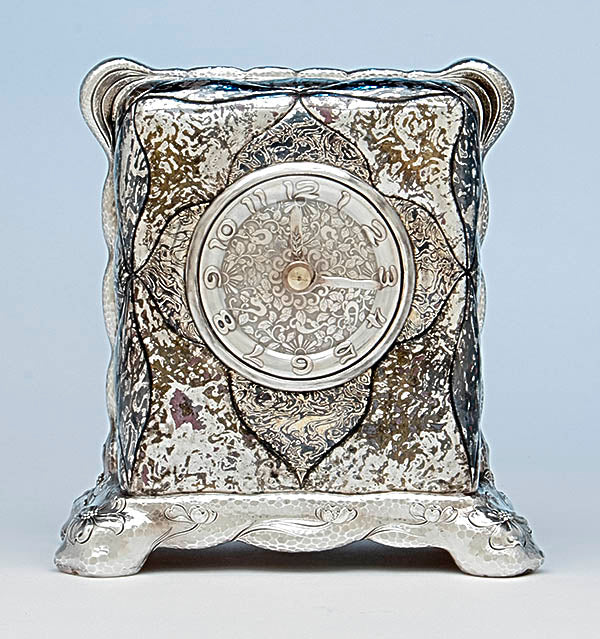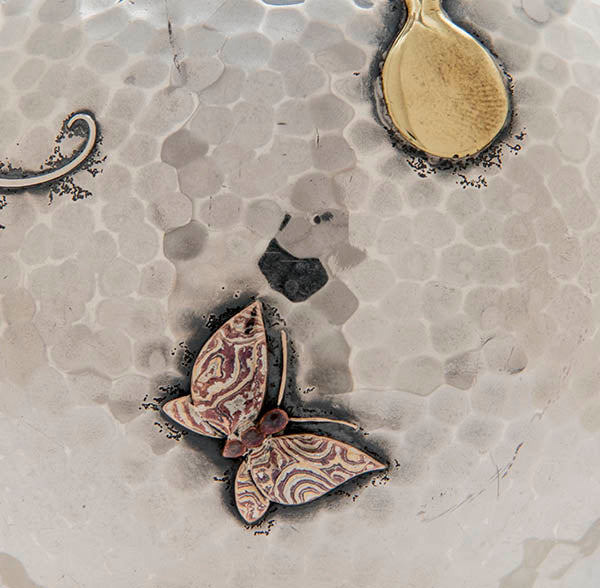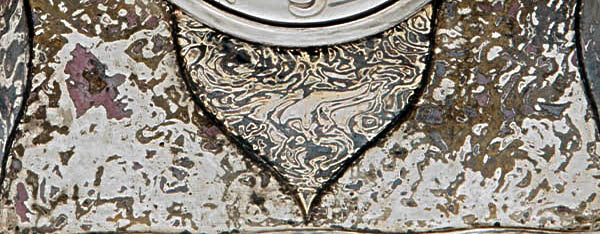Your Cart is Empty
FREE standard shipping to the continental US.
FREE standard shipping to the continental US.
FREE standard shipping to the continental US.
June 03, 2020 2 min read
The bold colors, striations, and patterns of mokume are one of the singular achievements of Tiffany & Co. and the American aesthetic movement. Mokume, also called mokume-gane, means wood grain, or wood grain metal. Initially made by 17th-century Japanese sword makers, mokume is a lamination of layers of different colored precious metals that, when finished, is patinated for further effect.
Under the direction of Edward C. Moore and lead silversmith Charles Grosjean, Tiffany's' silver department invented a method to laminate precious metals and pushed the coloration further than had been done before.

Tiffany's method used four layers of:
These layers were carefully soldered together then rolled to a thinness of 1/8 of an inch. This layer was cut into three pieces, which were soldered to each other and hammered and rolled thin again. This process was repeated until the mokume was 36 layers thick. Mokume was annealed but never pickled, unless masked by protective varnish.

After creating these micro-layers, silversmiths would cut the piece to shape and then drill, carve, or gouge the surface to create patterns. "Drilled Metal gives a succession of circles...which may be used for butterfly wings or cut with a chisel breaking up the circles produces a pleasing effect." Other motifs, such as imitation of tortoiseshell, could be created as well.

Lastly, the mokume was patinated to give it the final color. Different alloys produced different colors after the final patination. For instance, pure copper patinated red, Lake Superior copper patinated brown to red. When the copper was alloyed with iron, it produced a reddish-brown and purple mahogany like color. After the final bath, the mokume work provided a "veneer" like effect.
Occasionally, brass was used as one of the layers. While difficult to solder because of its alloys, it "renders a greater contrast in color than is supposed, producing a greenish tint that is of a very delicate nature."

Tiffany's mokume was the most difficult to create and most exotic of the mixed metals made during the aesthetic movement in the United States; it produced colors and patterns unlike anything made before or after. Today, when seen with its original shades of black, red, green, silver, and gold, it remains an extraordinary achievement of silversmithing.
Bibliography:
Charles T Grosjean (attr.), Ledger (Technical Book of Processes and Metallurgy), The Gorham Archives, John Hay Library, Brown University.
Sign up to get the latest updates and current musings in our occasional newsletter…
